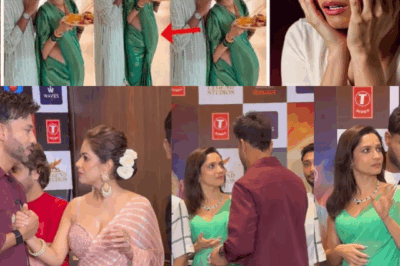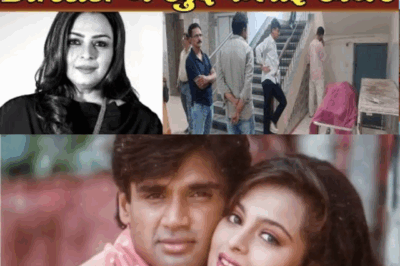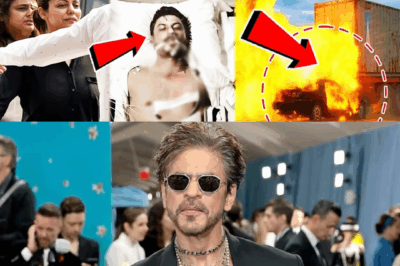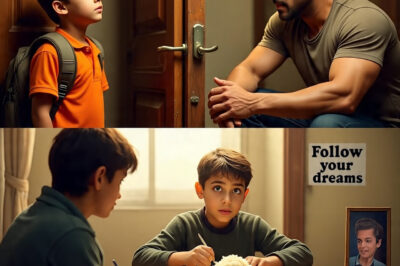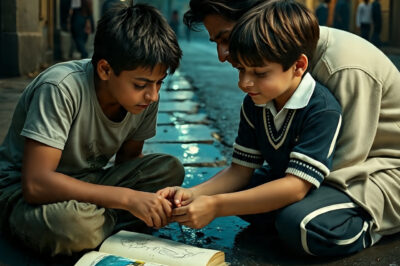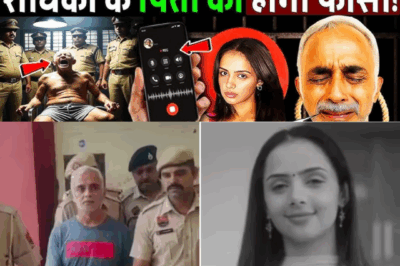It all started with a single image. A woman, wrapped in white bandages, lying unconscious on a hospital bed. The caption read: “Rashmika Mandanna admitted in critical condition after a serious injury.” Within minutes, the photo was everywhere—on WhatsApp forwards, Facebook pages, fan accounts, and YouTube thumbnails screaming the words: Sad News.
For millions of Rashmika’s fans, the shock was instant. Was it true? What had happened? Why hadn’t the media reported anything official? As the rumors spiraled, so did the panic. People prayed. Hashtags trended. Emotions ran high.
But beneath the chaos was a different truth—one far less dramatic but far more important to understand. The heartbreaking image that had gone viral wasn’t Rashmika at all. In fact, it wasn’t even real. The entire scene had been digitally fabricated or pulled from an unrelated context. And Rashmika? She was fine.
Yes, she had suffered an injury. But it wasn’t new. It wasn’t critical. And it certainly didn’t put her in a hospital bed fighting for her life.
Back in January 2025, Rashmika had posted on her Instagram stories about a minor leg injury she sustained during a gym workout. In her own words, she was “in hop mode” for a while—temporarily pausing a few commitments while healing. There were no dramatic ambulance scenes. No emergency surgery. Just a young woman, like many others, pushing herself and getting hurt in the process.
But that didn’t stop the internet from spinning a different tale.
The image that sparked the storm, as later revealed by fact-checkers, was actually taken from an unrelated medical case. Ironically, it belonged to a UK news report about a different woman entirely—Nicki Chapman, a British TV presenter. AI manipulation and lazy journalism had combined to create a Frankenstein lie that fooled millions.
And this wasn’t just a random mistake—it was a deliberate attempt to capitalize on emotion. Content creators slapped Rashmika’s name on the photo, added dramatic titles, and sat back as views and likes poured in. The pain wasn’t hers—but the anxiety, the worry, the heartbreak? That all became real.
A fan from Hyderabad wrote on X, formerly Twitter:
“I couldn’t sleep after seeing that video. Rashmika is like family to us. Why would someone play with our emotions like this?”
Another from Malaysia said:
“My mom cried thinking it was true. People who spread these fake posts need to be held accountable.”
And that’s the tragedy here—not just the rumor itself, but the emotional toll it took on the people who love her. Rashmika Mandanna isn’t just a star—she’s a national sweetheart, a rising icon who has earned her place in the hearts of millions with films like Pushpa, Geetha Govindam, and Mission Majnu. For many, seeing her hurt—even falsely—felt personal.
Thankfully, the truth surfaced. Reliable entertainment portals confirmed that Rashmika was perfectly safe and actively shooting for her upcoming projects, including Sikandar with Salman Khan and the historical epic Chhaava. No hospitalization. No crisis. Just a resilient actress getting back to work.
And Rashmika herself, ever graceful, chose not to dignify the fake news with a direct response. Her silence spoke volumes—because sometimes, letting the truth breathe on its own is the loudest reply.
Still, the incident raises serious questions about how quickly misinformation spreads and how easily emotions can be manipulated online. In the age of AI-generated images and clickbait content, even a lie can look heartbreakingly real.
This isn’t just about one actress. It’s about all of us. About how we consume news. About how quickly we share without checking. About how hungry we’ve become for drama—even when it’s not true.
As one media ethics expert noted:
“When we click on fake headlines, we reward dishonesty. And when public figures are involved, the damage isn’t just digital—it’s deeply emotional.”
So what can we learn from all this?
First, to pause. Before sharing, before reacting, before crying. Pause. Cross-check. Look for credible sources. Ask: Would this person really be in critical condition and no major outlet report it?
Second, remember that celebrities are human too. Their lives aren’t ours to exploit. If they’re injured, let the truth come from them—not through manipulated images designed to milk our grief.
And third, let’s be kinder. To them. To each other. To ourselves.
Because while this story ended with relief, not all do. Misinformation can lead to panic, harassment, and even trauma. And behind every lie is a real person—a fan, a parent, a child—who believes it.
In a world hungry for headlines, the truth deserves to be louder than the lie. Rashmika Mandanna is not in critical condition. She’s alive, well, and continuing to chase her dreams. That should be the real headline.
So to everyone who feared the worst: breathe easy. And to those who fabricated the worst: shame on you.
Let this be the last time we cry for a lie.
News
Ankita Lokhande’s Shocking Decision After Personal Tragedy: Is She Leaving Acting Forever?
When Stardom Meets Silence: Ankita Lokhande’s Quiet Exit from the Spotlight There are some stories that don’t begin with applause…
Shilpa Shirodkar’s Sudden Health Rumor Shocks Fans: What Did the Director Say?
A Storm of Lies: How Shilpa Shirodkar Became the Victim of Her Own Director’s Rumor It started like a spark,…
SRK’s ‘King’ Film Turns Nightmare: What Really Happened on Set?
The lights were blazing, the cameras ready. All eyes were on Bollywood’s undisputed king as he stepped onto the set…
Salman Khan and the Delivery Boy: A Midnight Encounter That Melted Hearts
It was close to midnight in Bandra, Mumbai. Salman Khan had just wrapped a grueling day on set. Exhausted, he…
Shah Rukh Khan and the Orphan Boy: A Heartwarming Encounter That Changed a Life
Among the dazzling lights of Mumbai and the glitz of Bollywood, there exists a moment no camera captured — yet…
What Did Radhika Say Before She Died? Police Zero In on Her Father After Phone Call Reveal
She was young. Bright. Full of dreams. But on that fateful evening, Radhika Yadav’s voice trembled on the phone—her final…
End of content
No more pages to load

